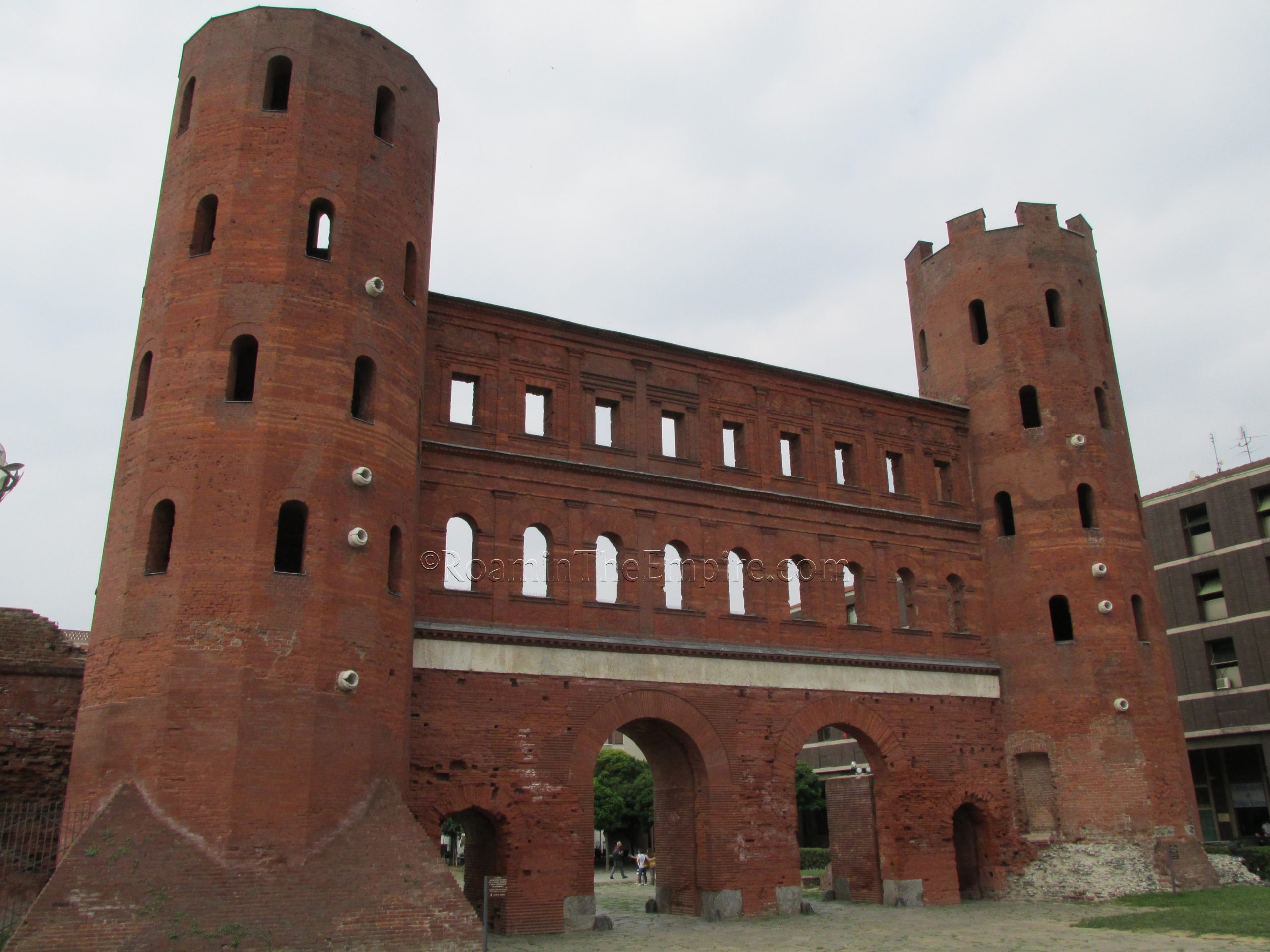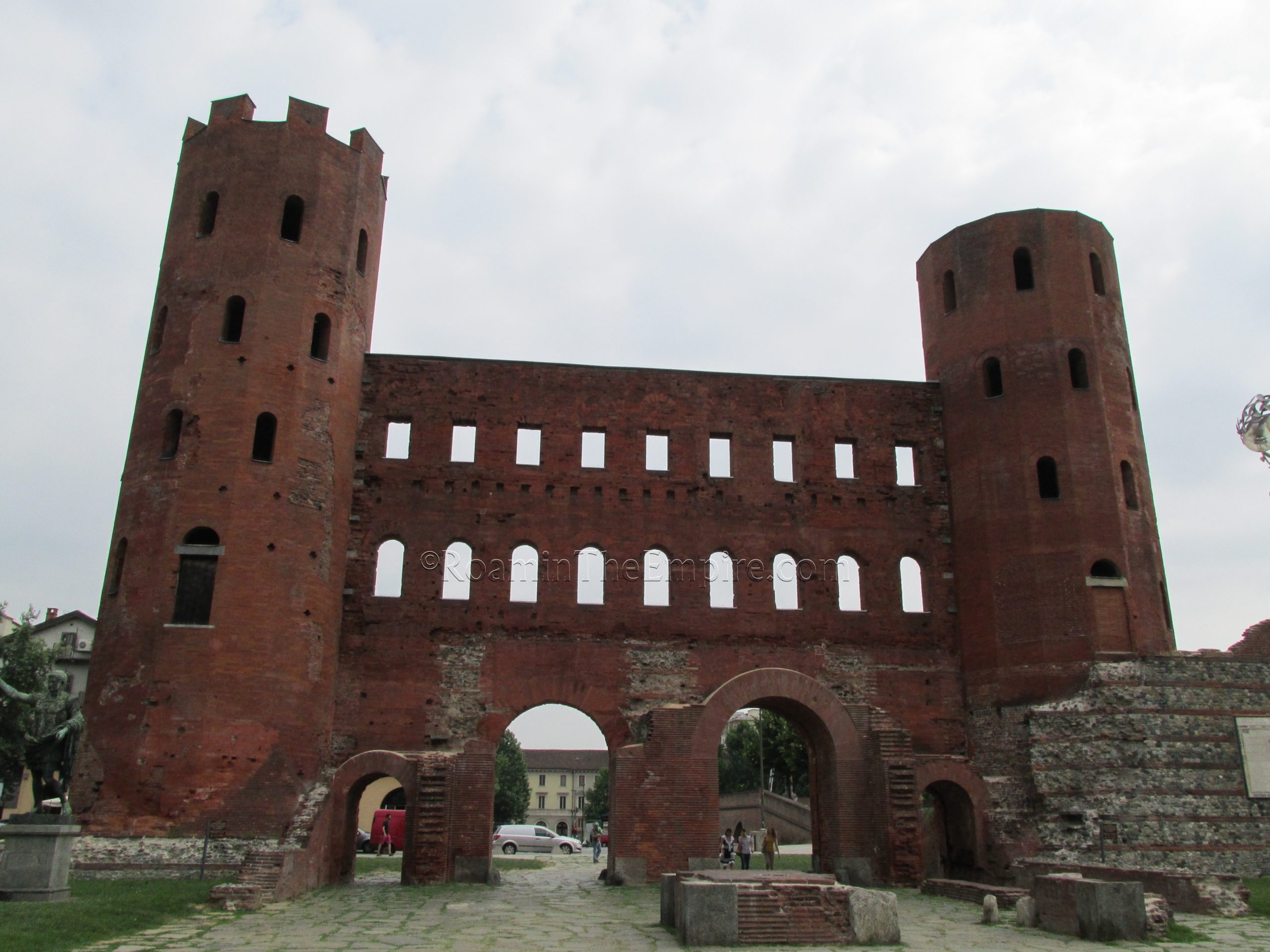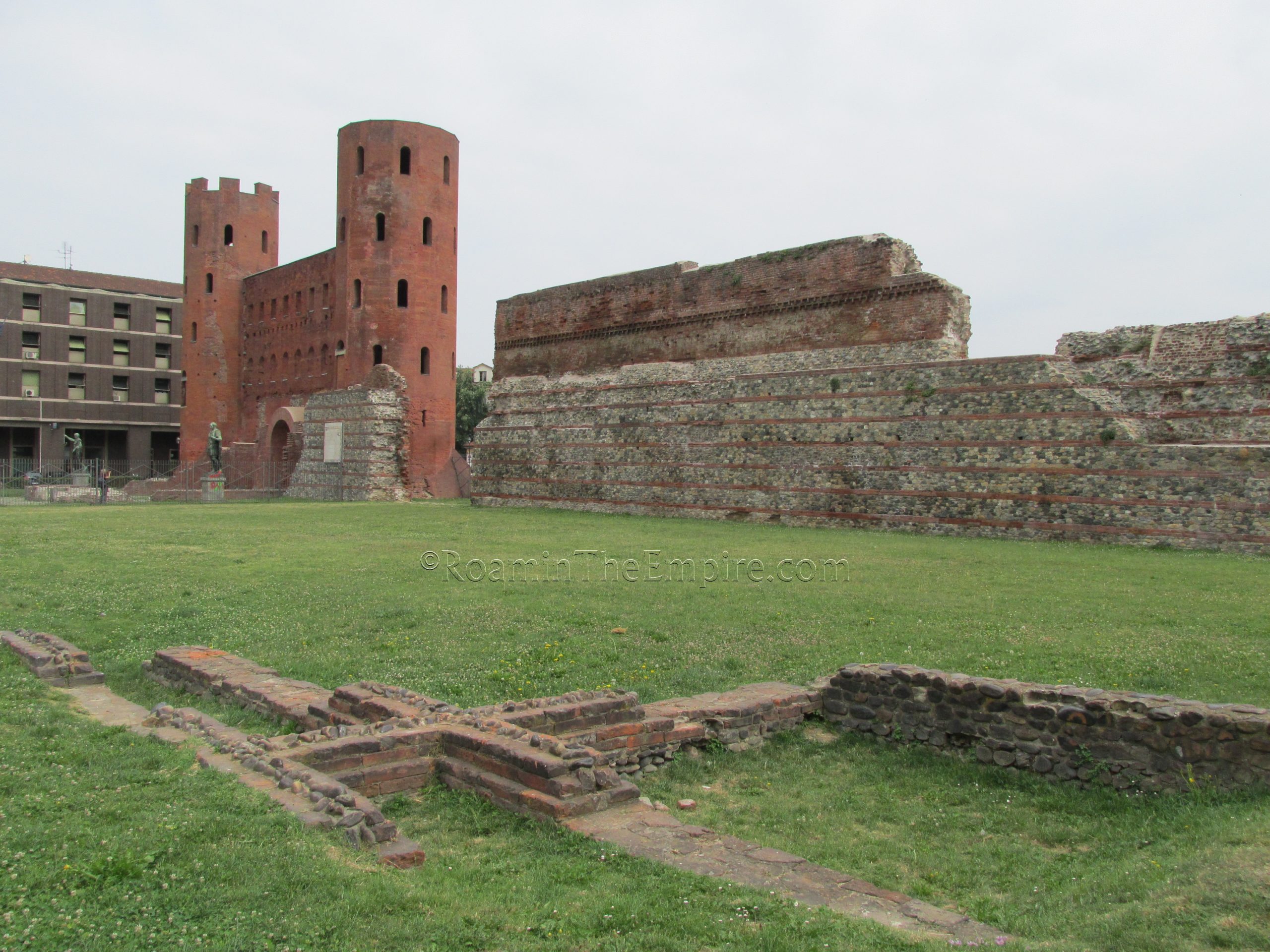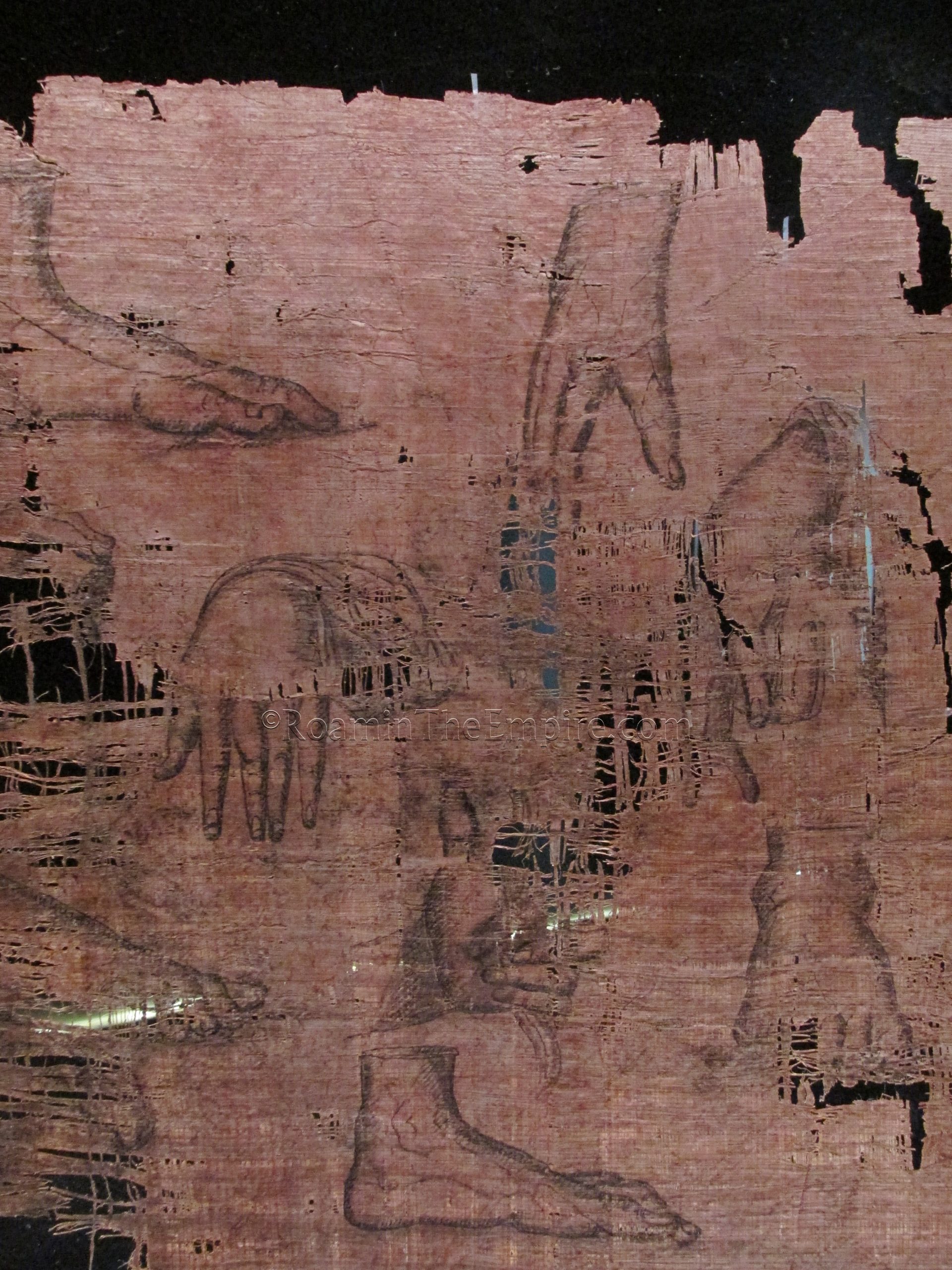
The Roman settlement of Julia Augusta Taurinorum, which gave rise to the modern Northern Italian city of Turino (Turin), seems to have begun life as a settlement of the Celto-Ligurian Taurini peoples, perhaps called Taurasia. The location of the settlement at the foot of the Cottian Alps and the confluence of the Padus/Eridanus and Duria Minor rivers (the modern Po and Dora Riparia, respectively) made for an ideal location and was probably the primary settlement of the Taurini, in part reflected in the Roman nomenclature of the settlement. It also marked the point at which the Padus became navigable by river traffic, making it an important location for trade networks in the region. The Taurini also seemed to have controlled the nearby passage through the Alps, perhaps the modern Susa Valley and through the Montgenevre Pass. They are noted by Pliny the Elder as being engaged mostly in agricultural matters, including the collection of pine nuts.
In the years leading up to the Second Punic Wars, one of the Taurini’s local rivals, the Insubres, allied themselves with Hannibal as he sought to forge ties with local populations in order to ensure a friendly reception when he descended into Italy after passing through the Alps. When he finally arrived in 218 BCE, perhaps as repayment for the Insubres’ hospitality, Hannibal attacked the Taurini and captured Taurasia after a brief siege. The prisoners taken in the siege were reputedly put to death if they did not willingly come to Hannibal’s side, as a means of persuading other Gallic groups in the region to support Hannibal. The settlement itself doesn’t feature much in the historical record after this mention, though it seems to have been a city of some importance through the imperial period.
Taurasia likely came under Roman control in the first half of the 2nd century BCE when much the rest of the region was brought into the Roman hegemony. A Roman colony was established around 27 BCE, probably first being called Castra Taurinorum (a name which may predate the late 1st century BCE colony), and then after the pacification of the neighboring Salassi, given the name of Julia Augusta Taurinorum. During the civil wars of 69 CE, during the conflict between Otho and Vitellius, a contingent of Batavian soldiers under Vitellius was stationed in the city. After a disagreement between a soldier and local artisan nearly resulted in a riot, the soldiers were forced to leave the city and upon their departure a fire of unknown origin destroyed a significant portion of the settlement. In early 312 BCE, shortly after leading his troops into Italy, Constantine fought a battle and earned a victory against the forces of Maxentius near Julia Augusta Taurinorum. The people of the city apparently refused to allow the retreating troops of Maxentius to take refuge in the city, resulting in a slaughter outside the gates. Constantine was subsequently welcomed.
Getting There: Turin is a relatively major city, the fourth largest in the country, and as such it is pretty well connected to the other major cities in the region. It’s a bit of a haul from Rome, nearly 5 hours for the fast, expensive trains, and upwards of 7 for the slower, cheaper trains. Milan, though, which has an international airport, is only about 2 hours by train with frequent departures daily. The nearby Turin-Caselle Airport also serves destinations around Europe, including many of the top discount airlines. It’s certainly a city that provides a good base for seeing other things in the region and is worth staying in as well.
The Roman remains of Julia Augusta Taurinorum aren’t especially prolific, but they are pretty high quality; including two extensive museums dealing with antiquity. As such, everything is essentially also located in a relatively small radius.

The first stop worth seeing is kind of the crown jewel of the remains of Julia Augusta Taurinorum; the Porta Palatina, the Palace Gate. It is located in the northeast part of the city center, in the aptly named Parco Archeologico Torri Palatina. Despite the name, this is a public park, rather than a ticketed archaeological site. The gate itself is located in an always accessible public area, but the adjacent park in which part of the wall and some miscellaneous remains are located in, is gated and limits access at some point. There were no posted hours, but, it’s probably limited to daylight hours, or perhaps something in the vein of 7:00 to 22:00 or so.
The name Porta Palatina is post-antique in origin, perhaps referring to the nearby medieval buildings, the Casa del Senato or Palazzo di Città. It was also, at one time called the Porta Dorica in reference to its proximity to the Dora Riparia. The actual name to which it was referred to in the Roman period is unknown, but it is noted as being a porta principalis dextra, a term associated with the settlement in its incarnation as a castrum, and referring to the right side main gate where the cardo maximus starts on the north side of the city.The Porta Palatina was constructed in the 1st century BCE, likely under the reign of Augustus following his establishment of a colony there, likely replacing an earlier gate on that spot.

Today the gate consists of two large towers on either side, and four portals (two large entrances and two smaller pedestrian entrances) topped by two levels of arcades. The towers were heavily reconstructed in the 15th century CE in order to serve as defensive fortifications. The primary remains standing today would have been the external face of the gate, while some scant remains of the interior courtyard are visible to the south of the façade. Flanking the interior courtyard area are two modern reproductions of statues depicting Julius Caesar and Augustus.
A nearly 200 meter stretch of the city wall adjacent to the gate is located in the park to the southeast, some of it preserved to a pretty impressive height of about 10 meters or so. There’s also a few miscellaneous remains that I have been unable to find any contextual information for. They might be Roman or perhaps a little later. The small section of walls, just a few courses high is closest to the city walls. Then a bit further south are some more robust constructions with a little better form. There’s even one part that has what appear to be perhaps the remnants of terracotta piping embedded in the wall. Unfortunately, the scatter of stones from the wall indicates that this wall is in a very ongoing state of deterioration, in no small part to continued, unfettered access.

Across the street (Via XX Settembre) to the southeast, between the Parco Archeologico Torri Palatine and the Museo di Antichità di Torino, are the remains of the theater and an adjacent quadriporticus. There is no direct access to any of these remains, though they are visible from the street. On the north side of the quadriporticus, there’s also another stretch of the city walls along with the foundations of a tower in the walls. About half the theater and quadriporticus are exposed, with the other half beneath the buildings that make up the palace and museum complex that contains the archaeological museum. Some elements of the theater are also visible inside the museum, and a better view of the quadriporticus and city walls can be seen on the pathway that leads to the museum entrance.\
The theater seems to have been built in the late 1st century BCE, perhaps about 13 BCE. An inscription notes the patronage of the son of Marcus Julius Cottius in the building of an adjacent structure (perhaps the quadriporticus) as part of renovations in the early 1st century CE, and the actual construction of the theater may have been financed by Marcus Julius Cottius himself. A renovation in the late 1st century CE seems to have, among other improvements, increased the seating capacity to about 3,000 spectators. The theater fell into disuse in the 4th century CE and was subsequently used as a quarry for building materials.

On the other side of this archaeological area is the sometimes entrance to the Museo di Antichità di Torino. When I visited, however, I was directed to the entrance to the larger museum complex on the north side of the Piazzetta Reale, which is the actual address of the museum, Piazzetta Reale 1. The museums are open Monday through Friday from 9:00 to 19:00 in the winter, and Tuesday through Sunday from 9:00 to 19:00 in the summer. Admission is 15 Euro and includes all of the different museums in the complex, including the Museo di Antichità di Torino.
The complex of museums here is pretty impressive, and one could likely spend the entire day wandering among them. Most of the other museums are dedicated to later periods, though the Galleria Sabauda has some 17th-18th century reproductions of ancient sculpture and some classically themed paintings that are certainly worth looking through and of particular interest for those interested in antiquity. The Museo di Antichità di Torino itself is quite extensive alone and took me about 3.5 hours to go through.

The museum contains much of what one might expect in an archaeological museum, which is actually housed in the main palace area with the other museums as well as a significant annex on the north side of the property. There’s a lot of inscriptions that are pretty well presented and represent a lot of different aspects of life in Julia Augusta Taurinorum and the surroundings. Most of these include nice English translations and explanations. The museum also sports a pretty nicely presented numismatic collection as well. Of course, there are plenty of ceramics, both decorated and un-decorated, as well as other small finds and even a little glassware.
Surprisingly, there isn’t a whole lot of larger statuary or mosaics in the museum, though there are a few. One of the highlights of the collection is a silver bust of Lucius Verus, originally found crushed but meticulously restored in the early 20th century. Several other silver objects were found along with the bust and also on display, including a gilt strip with relief of thirteen different deities. Also contained at the museum is the Artemidorus Papyrus; fragments of papyrus containing book 2 of Artemidorus Ephesius’ geography text. Of particular interest on this papyrus are the various illustrations of anatomy, animals, and mythological creatures. It is definitely not to be missed.

When I visited the museum in 2015, there were a few more exhibits planned in the coming years to the annex area (where the papyrus is located), including rooms dedicated to Roman Egypt and the Roman East, which should be open by now according to the posted schedule. Which, given the extensions, should warrant even more time than what I spent there.
Just a few blocks away at Via Accademia delle Scienze 6, is the Museo Egizio, the Egyptian Museum. The museum is open from 9:00 to 18:30, Tuesday through Sunday in the summer and closed on Mondays. The rest of the year it is open on Mondays from 9:00 to 14:00 and Tuesday through Friday from 9:00 to 18:30. It is closed on Saturday and Sunday. Admission is 12 Euros.

As the name suggest, the museum is dedicated generally to Egyptian culture, of all periods, but does include a number of artifacts from the Roman period. Among these are funerary portraits, mummy masks and stele. Perhaps one of the most well-known centerpieces of the Roman portion of the collection is the Mensa Isiaca, also known as the Bembine Tablet. Roman in origin, but imitating Egyptian motifs and inscribed with nonsensical hieroglyphs, it dates to the 1st century CE and was probably created in connection with an Isis cult.
The collection includes a lot of what one might expect to find in an Egyptian museum; mummies, sarcophagi, and other funerary objects like Canopic jars and grave goods. The museum also has a pretty good collection of statuary and stele. There’s a few papyri dating to various periods. Overall it’s a very cool museum, considered by some to be the best collection of Egyptian objects outside of Egypt. I spent about 2 hours there, but, unfortunately opted to go on a free evening in the summer, when it was absolutely packed. I’m sure if it hadn’t been so busy, I probably would have spent a little more time there. Three hours would definitely not be too long to spend at this museum, it’s absolutely must-see.
There’s one other spot with some remains of Julia Augusta Taurinorum that I was not able to see, and that is part of the eastern city gate contained in the Palazzo Madama at Piazza Castello. Unfortunately, the palazzo was closed during both my visits to Turin, but is normally open Wednesday through Monday from 10:00 to 18:00 with an admission of 10 Euros.
Sources:
Appian. Romaica, 2.5.
Grant, Michael. A Guide to the Ancient World: A Dictionary of Classical Place Names. New York: Barnes & Noble Books, 1997
Pliny the Elder. Historia Naturalis, 3.17.
Polybius. Historiai, 3.60.
Roncaglia, Corolynn E. Northern Italy in the Roman World. Johns Hopkins University Press, 2018.
Stillwell, Richard, William L. MacDonald, and Marian Holland. McAllister. The Princeton Encyclopedia of Classical Sites. Princeton, NJ: Princeton U Press, 1976.
Strabo. Geographica, 4.6.
Tacitus. Historiae, 2.66.


